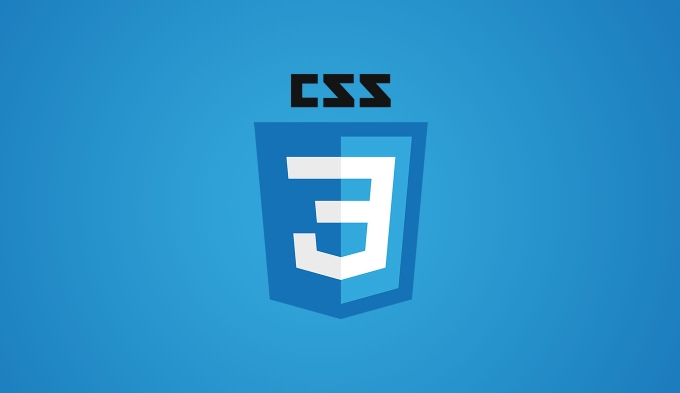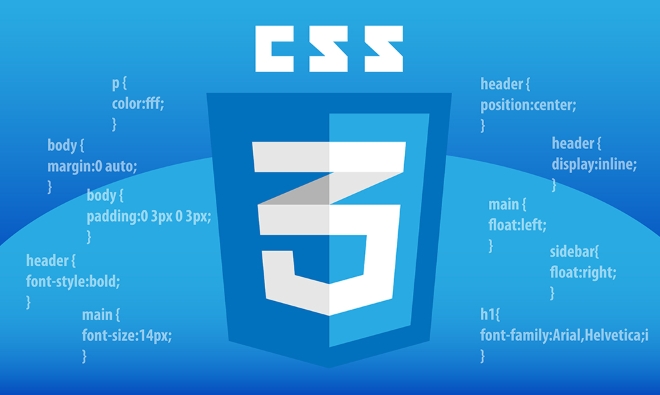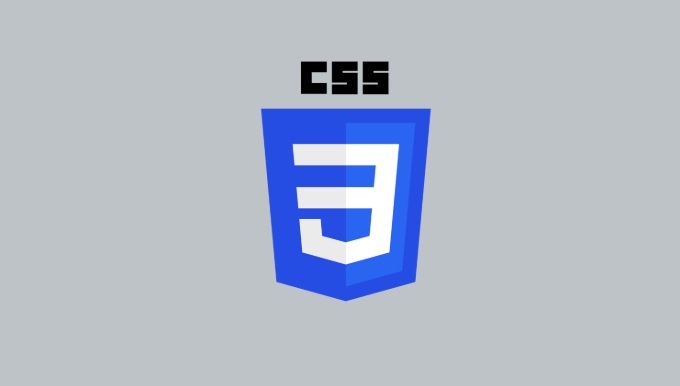The CSS transform attribute realizes the translation, rotation and scaling effects of elements through functions such as translate, rotate, scale. 1. translate is used for smooth movement, such as button hover displacement; 2. rotate is used to implement rotation animation, suitable for loading icons; 3. scale is used to create zoom feedback, such as image hovering; 4. Multiple functions can be used in combination to enhance visual effects without affecting layout and improve interactive experience.

The transform attribute of CSS is a very practical tool, especially when using it to create web page visual effects. If used well, it can make the page look more vivid and layered. It not only has simple displacement or rotation, but also combines animations, transitions, etc. to create many attractive small details.

How to use translate to achieve smooth movement
translate() is one of the most commonly used transform functions, used to move elements without changing the document stream. Compared to using position: relative or margin to adjust the position, translate is better in performance and animation performance.

For example, if you want to click a button and jump slightly to the upper right, you can use:
button:hover {
transform: translate(-5px, -5px);
} This effect is often used in scenes such as button interaction, card hovering, etc., giving people a feeling of "pressing and bounce up". If you use it with transition , you can also smooth the movement process.

Tips:
- Move multiple directions can be written as
translate(x, y), ortranslateX()andtranslateY()can be used separately. - The distance of movement is recommended to be controlled between 5~15px, as it is too large and it will easily appear abrupt.
Use rotate to create rotation animation
rotate() can rotate elements around the center point, and is often used in scenes such as loading icons, icon switching, menu expansion, etc.
For example, a refresh button continues to rotate when loading:
.loading {
animation: spin 1.2s linear infinite;
}
@keyframes spin {
from { transform: rotate(0deg); }
to { transform: rotate(360deg); }
} It should be noted that the default rotation center is the element center. If you want to change it to the upper left corner or other position, you need to use it with transform-origin .
Common uses include:
- Changes in status after button click
- Transition when icon switches
- Menu Expand/Close animation
Visual feedback from scale
scale() can zoom in or out of element, which is very suitable for user feedback effects such as mouse hovering to increase, clicking and scaling.
For example, common image hovering effect:
img {
transition: transform 0.3s ease;
}
img:hover {
transform: scale(1.1);
} This method is more natural than changing width and height directly, and it will not affect the layout. However, be aware that scaling exceeds 1.2 times may cause elements to overlap or overflow the container, and the layout space needs to be considered in advance.
In addition, negative values ??such as scale(-1) can also achieve mirror flip, which is suitable for some special UI effects.
Use with multiple transform functions
CSS allows you to superimpose multiple functions in the same transform property, and as long as the order is correct, it can produce complex and smooth effects.
For example, when a button is clicked, it can be scaled and rotated at the same time:
button:hover {
transform: scale(1.05) rotate(2deg);
}Note that the order will affect the final effect, such as rotating first and then translation, and translation first and then rotation, the result may be different.
Common combinations are:
-
scale rotate: Enhanced visual feedback -
translate scale: simulates "bounce" effect -
rotate skew: Create a tilt dynamic style
Basically that's it. The power of transform is actually much more than that, but its advantage is that it is simple and easy to use, and a little bit of it can improve the overall experience.
The above is the detailed content of Using CSS transform properties for visual effects. For more information, please follow other related articles on the PHP Chinese website!

Hot AI Tools

Undress AI Tool
Undress images for free

Undresser.AI Undress
AI-powered app for creating realistic nude photos

AI Clothes Remover
Online AI tool for removing clothes from photos.

Clothoff.io
AI clothes remover

Video Face Swap
Swap faces in any video effortlessly with our completely free AI face swap tool!

Hot Article

Hot Tools

Notepad++7.3.1
Easy-to-use and free code editor

SublimeText3 Chinese version
Chinese version, very easy to use

Zend Studio 13.0.1
Powerful PHP integrated development environment

Dreamweaver CS6
Visual web development tools

SublimeText3 Mac version
God-level code editing software (SublimeText3)

Hot Topics
 What is 'render-blocking CSS'?
Jun 24, 2025 am 12:42 AM
What is 'render-blocking CSS'?
Jun 24, 2025 am 12:42 AM
CSS blocks page rendering because browsers view inline and external CSS as key resources by default, especially with imported stylesheets, header large amounts of inline CSS, and unoptimized media query styles. 1. Extract critical CSS and embed it into HTML; 2. Delay loading non-critical CSS through JavaScript; 3. Use media attributes to optimize loading such as print styles; 4. Compress and merge CSS to reduce requests. It is recommended to use tools to extract key CSS, combine rel="preload" asynchronous loading, and use media delayed loading reasonably to avoid excessive splitting and complex script control.
 How to use Lotties in Figma
Jun 14, 2025 am 10:17 AM
How to use Lotties in Figma
Jun 14, 2025 am 10:17 AM
In the following tutorial, I will show you how to create Lottie animations in Figma. We'll use two colorful designs to exmplify how you can animate in Figma, and then I'll show you how to go from Figma to Lottie animations. All you need is a free Fig
 Breaking Boundaries: Building a Tangram Puzzle With (S)CSS
Jun 13, 2025 am 11:33 AM
Breaking Boundaries: Building a Tangram Puzzle With (S)CSS
Jun 13, 2025 am 11:33 AM
We put it to the test and it turns out Sass can replace JavaScript, at least when it comes to low-level logic and puzzle behavior. With nothing but maps, mixins, functions, and a whole lot of math, we managed to bring our Tangram puzzle to life, no J
 External vs. Internal CSS: What's the Best Approach?
Jun 20, 2025 am 12:45 AM
External vs. Internal CSS: What's the Best Approach?
Jun 20, 2025 am 12:45 AM
ThebestapproachforCSSdependsontheproject'sspecificneeds.Forlargerprojects,externalCSSisbetterduetomaintainabilityandreusability;forsmallerprojectsorsingle-pageapplications,internalCSSmightbemoresuitable.It'scrucialtobalanceprojectsize,performanceneed
 Does my CSS must be on lower case?
Jun 19, 2025 am 12:29 AM
Does my CSS must be on lower case?
Jun 19, 2025 am 12:29 AM
No,CSSdoesnothavetobeinlowercase.However,usinglowercaseisrecommendedfor:1)Consistencyandreadability,2)Avoidingerrorsinrelatedtechnologies,3)Potentialperformancebenefits,and4)Improvedcollaborationwithinteams.
 CSS Case Sensitivity: Understanding What Matters
Jun 20, 2025 am 12:09 AM
CSS Case Sensitivity: Understanding What Matters
Jun 20, 2025 am 12:09 AM
CSSismostlycase-insensitive,butURLsandfontfamilynamesarecase-sensitive.1)Propertiesandvalueslikecolor:red;arenotcase-sensitive.2)URLsmustmatchtheserver'scase,e.g.,/images/Logo.png.3)Fontfamilynameslike'OpenSans'mustbeexact.
 What is Autoprefixer and how does it work?
Jul 02, 2025 am 01:15 AM
What is Autoprefixer and how does it work?
Jul 02, 2025 am 01:15 AM
Autoprefixer is a tool that automatically adds vendor prefixes to CSS attributes based on the target browser scope. 1. It solves the problem of manually maintaining prefixes with errors; 2. Work through the PostCSS plug-in form, parse CSS, analyze attributes that need to be prefixed, and generate code according to configuration; 3. The usage steps include installing plug-ins, setting browserslist, and enabling them in the build process; 4. Notes include not manually adding prefixes, keeping configuration updates, prefixes not all attributes, and it is recommended to use them with the preprocessor.
 What are CSS counters?
Jun 19, 2025 am 12:34 AM
What are CSS counters?
Jun 19, 2025 am 12:34 AM
CSScounterscanautomaticallynumbersectionsandlists.1)Usecounter-resettoinitialize,counter-incrementtoincrease,andcounter()orcounters()todisplayvalues.2)CombinewithJavaScriptfordynamiccontenttoensureaccurateupdates.






